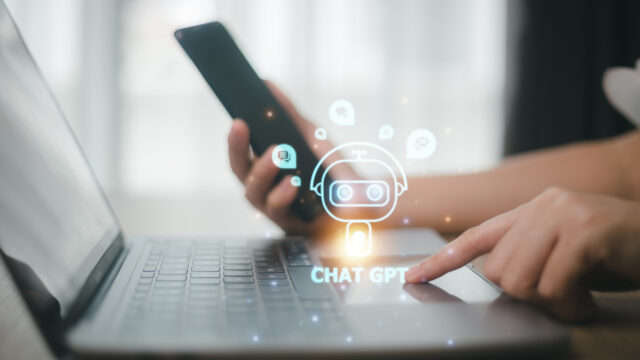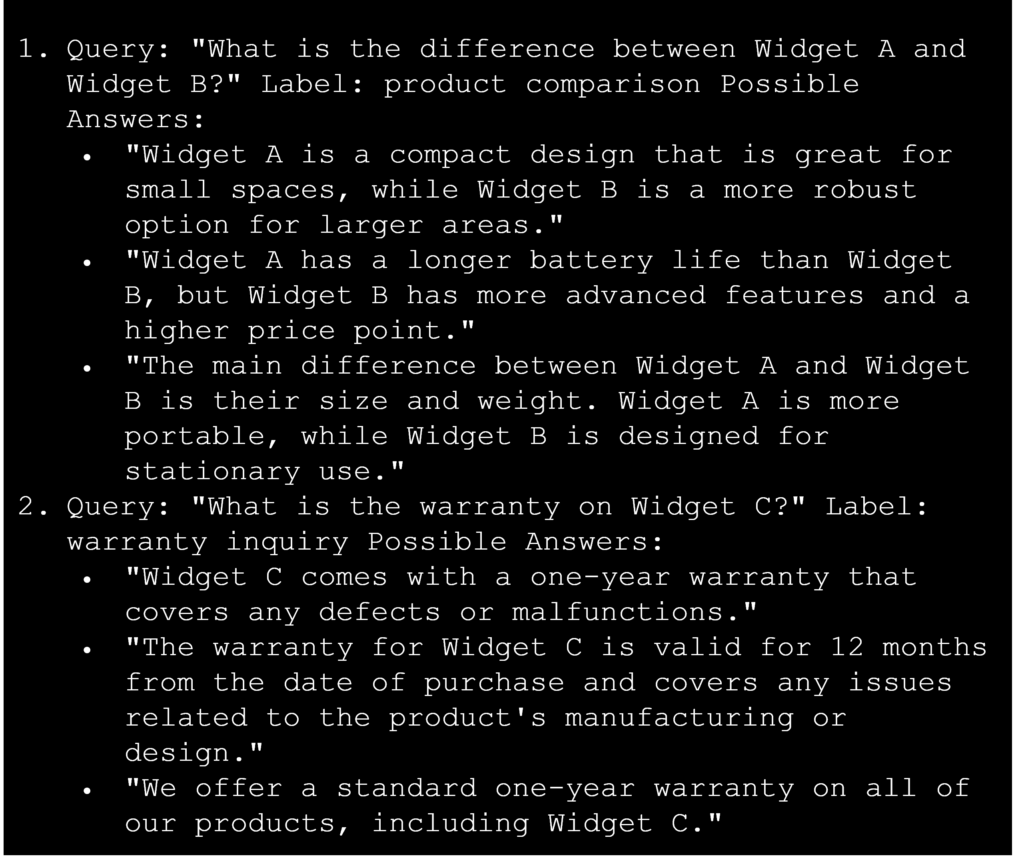Insights

A few of the many reasons to embrace ChatGPT as a chatbot
ChatGPT is democratizing AI for businesses everywhere, making it more accessible and affordable than ever. With its advanced natural language processing and conversation capabilities, ChatGPT as a chatbot can save time and substantially improve the customer experience.
ChatGPT offers plenty of advantages over other chatbot platforms. For starters, ChatGPT is trained on massive volumes of data and can typically provide relevant responses right out of the gate. It can then be fine-tuned for specific uses cases for greater accuracy and relevance when responding to user queries.
Furthermore, ChatGPT is highly flexible and can be tailored to reflect your business’s specific needs and brand voice. Scale it as needed to handle fluctuations in customer requests. Plus, you can even integrate ChatGPT with your other systems, such as CRM, e-commerce platforms, and social media.
In this article, discover how your business can leverage ChatGPT as a chatbot platform to create a tailored, seamless customer experience without breaking the bank. For help getting started, contact the experts at Beyondsoft or schedule time to chat with me directly.
Use cases for ChatGPT as a chatbot platform
ChatGPT can be tailored to help you improve the customer experience and streamline operations. For example, leverage ChatGPT to provide instant responses to customer queries around products, services, and policies, accelerating response times and reducing the workload on your customer support teams. Do you have a booking system? Integrate ChatGPT to allow customers to secure appointments through a conversational interface. You can even program ChatGPT to translate messages into different languages to engage with a global audience.
ChatGPT can be fine-tuned to help increase sales engagement. Put ChatGPT to work analyzing purchase history and browsing behaviors to give your customers highly personalized product recommendations and appealing promotional offers. ChatGPT can also boost sales by telling customers about complementary and higher-end products based on their unique preferences. Furthermore, the information that ChatGPT collects can be used to generate leads for future sales.
Integrating ChatGPT
Integrating ChatGPT into your application or website requires the OpenAI API, which allows you to access the model’s capabilities through an API endpoint. The API generates text, answers questions, and performs other language-related tasks. Several providers and platforms offer access to ChatGPT’s API, including OpenAI, Hugging Face, and Inferkit. Programming languages like Python or JavaScript are used to make API calls and integrate the model into your application or website.
Data labeling highly recommended
If you want a custom integration, data-labeling is crucial. Data labeling offers several advantages. Training the model on specific and relevant examples improves your chatbot’s accuracy and ability to understand customer queries. Data labeling allows you to customize data training around specific use cases, industry terms, and jargon. It also helps reduce the time and effort required to train your model, reducing the need for manual review and updates.
For example, let’s say you want to improve the performance of your e-commerce company’s chatbot by integrating ChatGPT using the OpenAI API and a labeled dataset. You could use the OpenAI GPT-3 fine-tuning API to train the model on a dataset of customer service questions and answers. This dataset would be labeled with the appropriate category for each question and answer, such as shipping, returns, or product information. The fine-tuned model could then be integrated into your company’s website or mobile app as a chatbot.

Another example is a question-answering chatbot for a medical website. The chatbot could be fine-tuned on a dataset of medical questions and answers labeled by medical specialties and diseases. The fine-tuned model would have an improved understanding of the medical language and context and provide correct information to the user.
By training models on a labeled dataset, your chatbot can better understand the specific language and context used in customer interactions, improving performance and accuracy. It’s also worth noting that labeled data has uses beyond your chatbot and can inform sentiment analysis, topic modeling, and entity recognition. In summary, you don’t need data labeling when you use the OpenAI API for ChatGPT, but if you want to fine-tune the model to your specific use case, you’ll need a labeled dataset.
Get started with ChatGPT
ChatGPT is a revolutionary technology that makes AI far more cost-effective and accessible. Moreover, it can be tailored to your business’s specific needs and brand voice and integrated with other systems and platforms.
If you need help getting started, the experts at Beyondsoft can help you strategize and analyze how best to integrate ChatGPT into your business. Beyondsoft can provide integration and data labeling services to implement and finetune responses to your specific use case. To explore how Beyondsoft can help you with your chatbot needs, schedule time to speak with me directly.

How we do it
Our success factors over the years are a testament to driving your return on investment. Singapore is our global head office and we have 15 regional offices around the world.

Three decades of strong IT consulting and services

Global presence across four continents

Certifications* in CMMI 5, ISO 9001, ISO 45001, and ISO 27001

>30,000 global experts

Microsoft Azure Expert MSP
ISO 9001 and 45001 (certificates issued to Beyondsoft International (Singapore) Pte Ltd). ISO 27001 (certificates issued to Beyondsoft International (Singapore) Pte Ltd, Beyondsoft (Malaysia) Sdn. Bhd., and Beyondsoft Consulting Inc., Bellevue, WA, USA)
